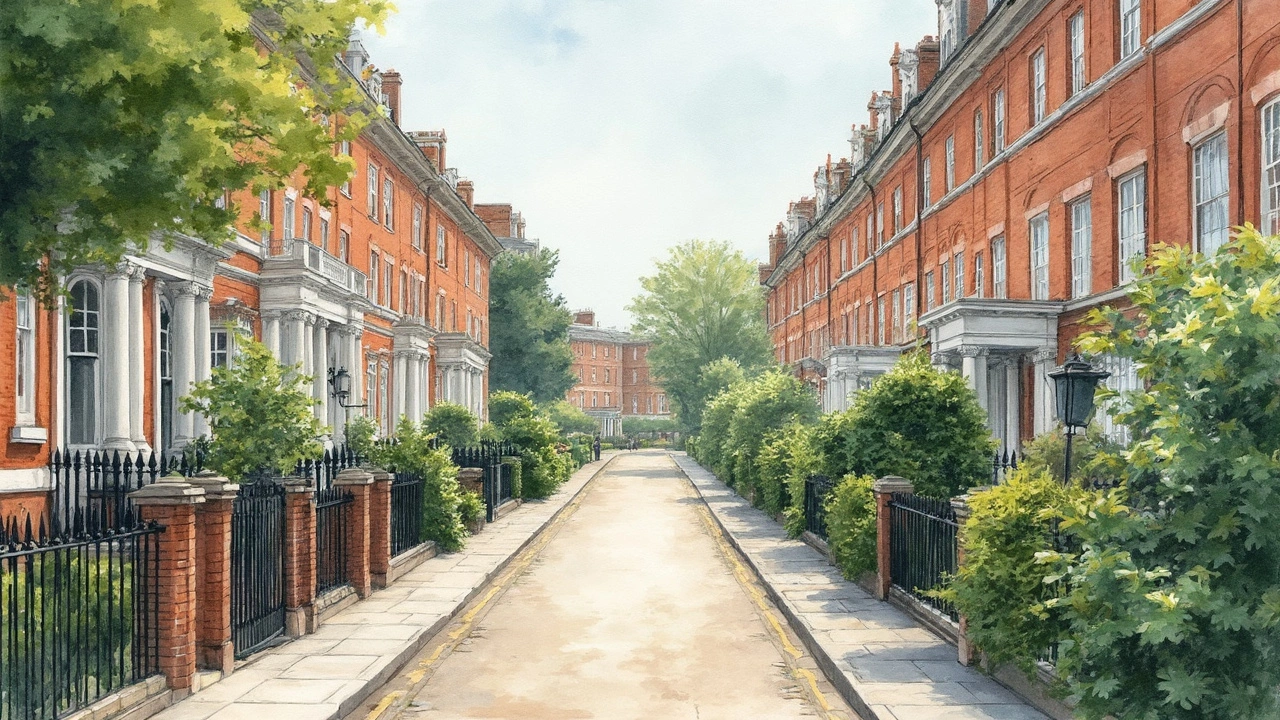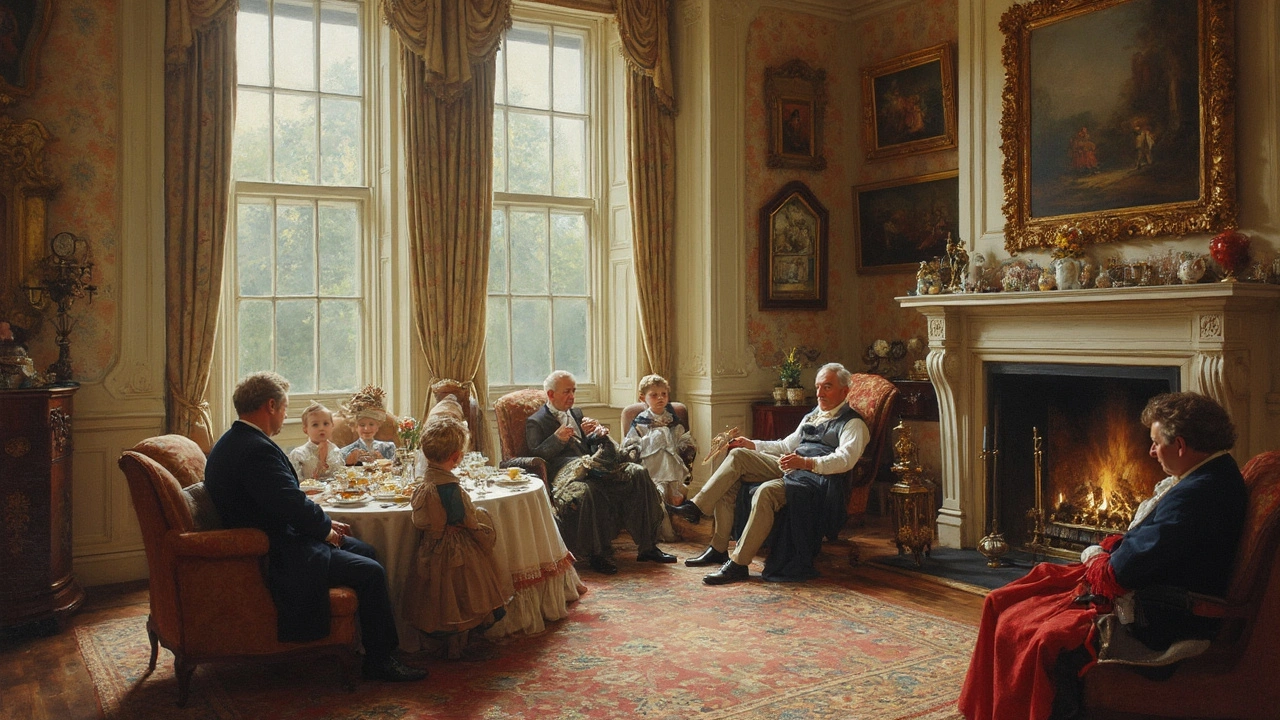Colonial Architecture: Exploring Timeless Styles and Historical Influence
 Aug, 4 2025
Aug, 4 2025
Think about strolling down a tree-lined street in an old city—the buildings feel like they’re whispering stories from centuries ago. Colonial architecture isn’t just about bricks and mortar. It’s about travelers, rebels, aristocrats, cultures colliding, and the little miracles (and oddities) they left behind on every continent they touched. Whether it’s a grand Georgian mansion in Sydney, a Spanish colonial courtyard in Lima, or a Cape Dutch farmhouse near Cape Town, each structure has history lurking in its walls—sometimes glamorous, sometimes troubled, always fascinating. There’s more here than meets the eye. Let’s peel back the layers and see how colonial buildings have shaped how we live and what we see as ‘classic beauty’ in architecture, right up to today.
Origins and Elements of Colonial Architecture
Colonial architecture kicked off as far back as the 16th century, when European nations—think Britain, Spain, France, the Netherlands, Portugal—started claiming and settling lands far from home. Settlers didn’t just bring their clothes or traditions. They brought their building styles, customs, and ideas about comfort. But what’s wild is, their new homes didn’t turn out as carbon copies of those they left behind. Weather, local materials, and even political drama forced them to improvise. That’s why you’ll spot a Dutch Colonial house in New York with sloped gambrel roofs for snowy winters, while a Spanish Colonial building in Mexico has thick adobe walls that act like natural air con.
One of the trademarks of colonial design? Symmetry. Snap a photo of the front and fold it in half—chances are, both sides will mirror each other. The famously straight, gridded layouts of early colonial settlements like Philadelphia or Adelaide were meant to show order and civility, a sort of visual way to prove, “Hey, we’ve got this under control.” Practical details mattered—a deep porch shielded you from sun, tall windows caught the breeze, and fireplaces kept out the chill. Doors lined up perfectly, chimneys punctuated rooftops like exclamation points, and shutters snapped shut in wild storms. But it’s not just about pretty facades. The style tells of survival, stubbornness, and invention in the face of the unknown.
| Feature | Region | Description |
|---|---|---|
| Gambrel roof | North America | Double-sloped to shed snow; classic Dutch look |
| Latticework verandas | Australia, Caribbean | Provide cooling shade, resist tropical heat |
| Adobe walls | Spanish colonies | Thick, insulating, made from local earth |
| Symmetric facades | British colonies | Orderly, balanced look—think Georgian mansions |
Even the wood—oak in England, cypress in the American colonies, eucalyptus in Australia—speaks to what was available at hand. Sometimes styles blended: you’ll see French doors in a British house, or indigenous motifs carved into a colonial façade. The result? An architectural remix, unique to every place and era.
Global Variations: How Colonial Styles Spread and Mixed
It’s tempting to think of colonial architecture as one-size-fits-all, but travel around and you’ll see how different it gets. In the southern United States, you’ll bump into Creole cottages with steep, flared roofs that survive hurricanes, while up in New England, stately Pilgrim homes huddle against winter winds. Jump over to India—grand bungalows with wide verandas nod to both British order and the local climate. Or take a walk around Fremantle in Western Australia, where you’ll see British Victorian warehouses jazzed up by Italianate flourishes.
The Spanish empire pretty much sprinkled their red tile roofs and inner courtyards everywhere from California to Peru. French colonial? In New Orleans, it means iron-lace balconies and open breezeways. The Dutch got fancy with crow-stepped gables in Cape Town. Each place added its own twist for survival and comfort—a Caribbean colonial home’s wraparound porch was perfect for a mid-day siesta, while a Canadian colonial log cabin was just about staying alive through endless winter.
Here’s a handy tip if you’re trying to spot the difference: focus on roofs and windows. British colonial shades toward the reserved and boxy—think straight lines and symmetry, double-hung sash windows. French colonial goes for style—curvy ironwork, tall, shuttered windows, floor-to-ceiling doors. Spanish colonial? Look for thick stucco, archways, and courtyards that feel like secret gardens. Some houses even have defense features, like the loopholes in fortified Quebec City homes, or the balustrades lining Caribbean upper floors for keeping watch.
Restoration expert Emma Talbot once said,
"The heart of any colonial building lies in how it adapts to its environment and borrows from everything around it—native wisdom, foreign dreams, and the pure need to stay upright through storms and time."Her words hit the mark. Colonial architecture is a snapshot of a specific moment—settlers muddling through, learning fast, adapting quicker.

Living With Colonial Architecture Today
If you’re lucky enough to live near a row of restored colonial-era terraces, go for a proper walk and look closely. It’s not just about nostalgia—these homes are built to last. Many have thick walls that muffle outside noise (helpful when city traffic’s a mess), deep eaves that keep the heat out (a godsend in summer), and high ceilings to move warm air up and away. In Adelaide’s North Adelaide or Sydney’s Paddington, you’ll find people queuing up for a Victorian terrace or a federation villa, not just because they look grand, but because they genuinely work for modern life.
Some folks still struggle with how to ‘update’ a colonial interior. There’s this myth that everything has to be dark wood and heavy velvet—but that’s not true at all. A tip? Use airy whites and creams on the walls, bring in breezy linen curtains, and let light bounce off a few carefully restored period features, like original plasterwork or a marble fireplace. You can use antique brass door handles or modern statement lights, and the space works—old meets new in a way that feels lived-in, not forced. Also, double-check wiring and pipes; a lot of colonial homes were built way before modern plumbing and electricity, so upgrading is often necessary (and not as complicated as it seems with the right trades).
One fun fact: In some places, heritage protection rules mean you can’t change the front façade, but once you step inside, modern design is fair game. Fancy a chef’s kitchen tucked behind an 1820s sandstone wall? Go for it. Hidden courtyards and secret second stories are common—many owners use spare attic space for home offices or dreamy reading nooks. It’s incredible how flexible these buildings can be if you respect the bones and bring your own style.
Here’s a handy table on common upgrades people make to old colonial homes:
| Upgrade | Purpose | Popularity |
|---|---|---|
| Double glazing windows | Improve energy efficiency | Very high |
| Restoring verandas | Outdoor living, heritage charm | High |
| Modern plumbing & wiring | Safety, comfort | Universal |
| Opening rear of house | Create open-plan living | Rising fast |
Maybe the most satisfying part? You’re preserving a patch of the past while making it work for life today. You can still host a Friday BBQ under a grapevine-covered pergola and feel just as at home as someone might have, a hundred years ago.
Tips for Appreciating and Preserving Colonial Buildings
Let’s say you want to give your colonial home (or the one you keep eyeing on your daily walk) the love and care it deserves. First up—do some reading. Local councils often have info about who built your place, and you might even find old sketches or blueprints in archives. Check out national registers, too. If you’re in Australia, the National Trust or state heritage directories are pure gold for quirky stories about your area.
Curious about daily life inside those walls? Museums sometimes do ‘colonial day’ events, letting you try traditional baking, spinning, or even kids’ games from the olden days. It’s pretty wild to realize that some rooms were built solely for greeting guests, or that rainwater tanks were as precious as gold.
Preservation is key, but don’t freak out if your sandstone wall has a bit of moss or your wooden cornices creak. That’s part of the charm—just make sure you tackle any leaks or termite issues fast. Use gentle cleaning techniques (think soft brushes, lime mortar, breathable paints), and avoid harsh chemicals that can wreck old stone or timber. If you’re restoring windows, look for period-appropriate glass—you’d be amazed how wavy, vintage panes feel different in the sunlight.
If your property is heritage-listed, there may be grants or expert services available to help you with repairs—take advantage of that. Invite friends over and tell them about the oddities you’ve found: weird bricked-up doors, underground cellars for cooling food, or symbols carved into beams for ‘good luck’. Every home has a backstory, and colonial buildings are loaded with secrets waiting to be found.
Before you head off—next time you pass a colonial church or government house, pause for a second. The walls are more than just old—they’re survivors. They show how people, when faced with wild new places, built something solid, sensible, and truly beautiful out of what they had and what they hoped. Colonial architecture is a record of that journey, and it’s still there, ready for the next chapter.